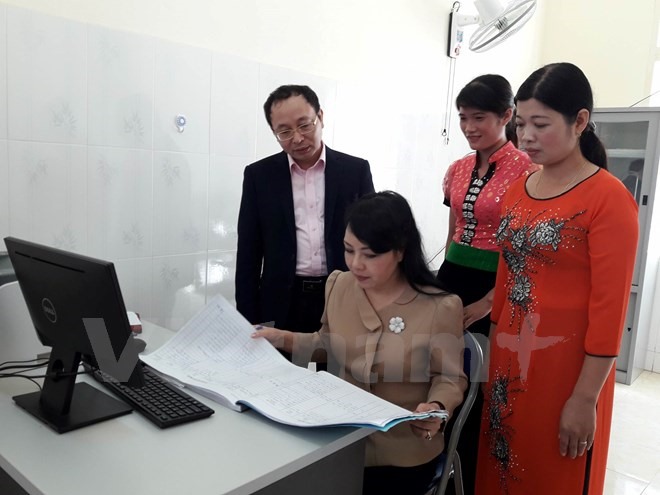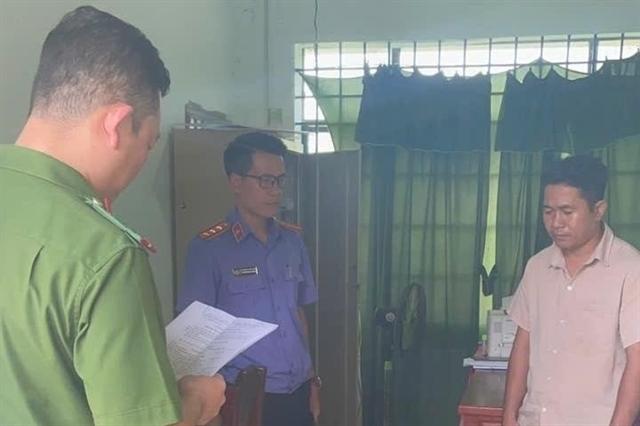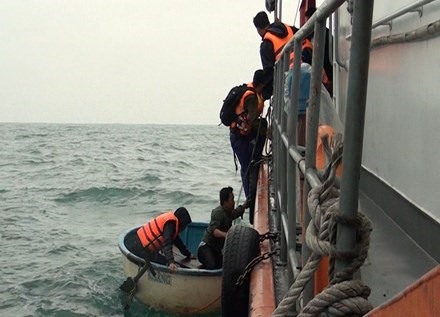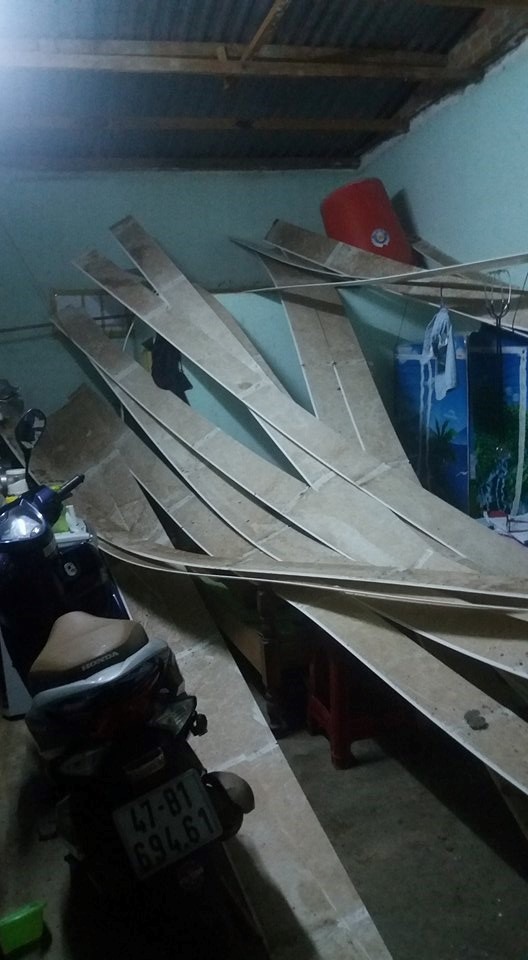
 |
| Health minister Nguyễn Thị Kim Tiến (seated on the chair) at Chiềng Yên Commune’s health station. VNA Photo |
HÀ NỘI – Only half of the total commune-level health stations across the country can meet national medical standards, health minister Nguyễn Thị Kim Tiến said on Tuesday.
At least 2,650 communal health stations are set up in makeshift houses, and another 3,000 need urgent repairs and upgradation, Tiến said while speaking at the inauguration of a health station in Chiềng Yên Commune in the mountainous Sơn La Province’s Vân Hồ District.
Because of the country’s poor economic situation and the lack of dedicated funds from state budget and government bonds, funding for such grassroots-level health stations had mainly come from the ODA (Official Development Assistance) projects, the provincial budget, the 135 Programme (established in 1998 to implement government policies targeting vulnerable communes) and enterprise donations, the minister said.
The Chiềng Yên Commune health station, built at a cost of VNĐ3.4 billion (US$150,000), has been funded by the European Union’s medical assistance project and other sources, and fulfils national medical standards, which is a first for the area.
There is no general hospital in Vân Hồ District, and its district-level health station has no treatment centre.
The two-storey Chiềng Yên health station, which occupies 150sqm, aims to provide medical services, check-ups and treatment to locals from ethnic minorities.
As per the health ministry’s reports, 70 per cent of medical check-ups and treatments are done at district- and commune-level health stations. This rate is even higher in mountainous, vulnerable areas that have a majority of poor people and those from ethnic minorities.
The need of the hour is a good grassroots-level health system, which will ensure that people get good medical care near their homes, which is especially useful in the mountainous regions where accessibility and commute are still difficult. —VNS





















